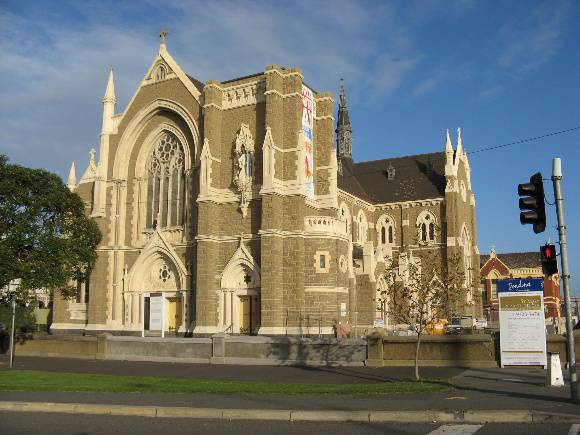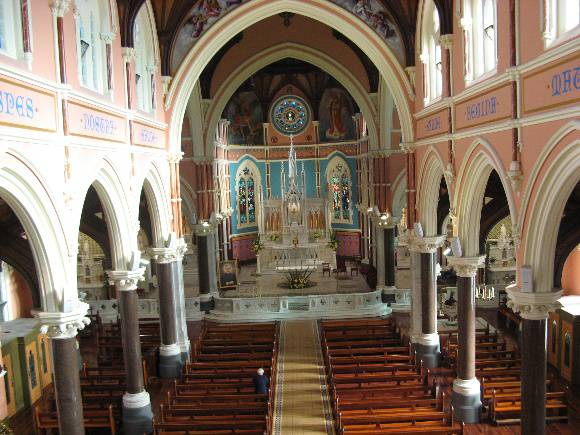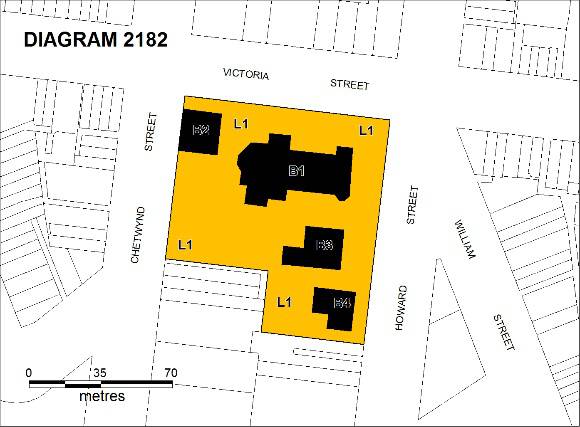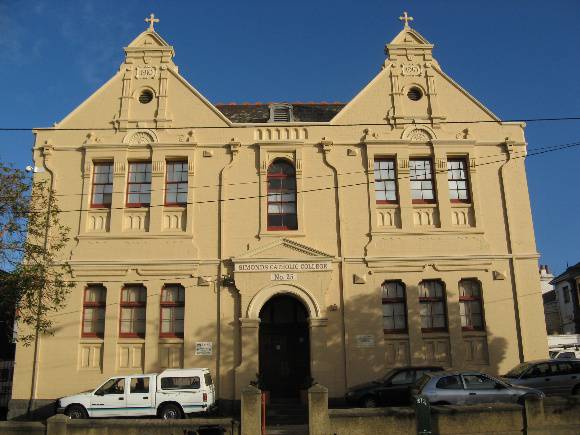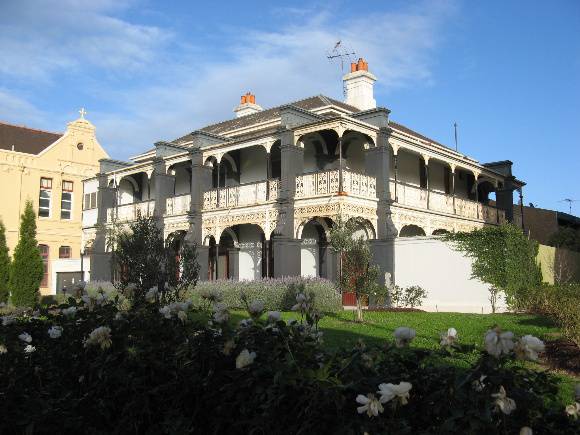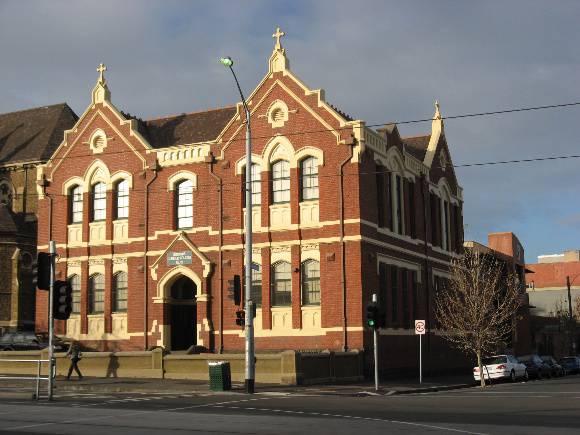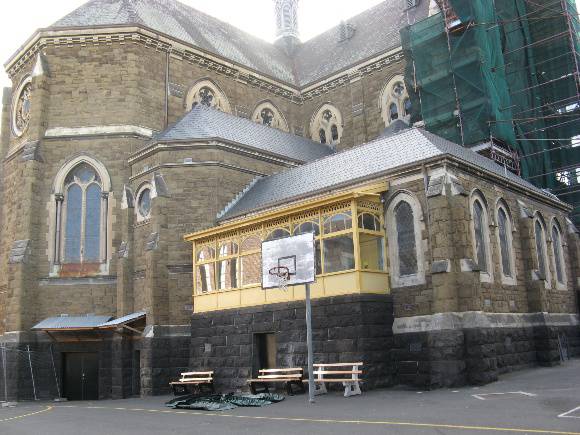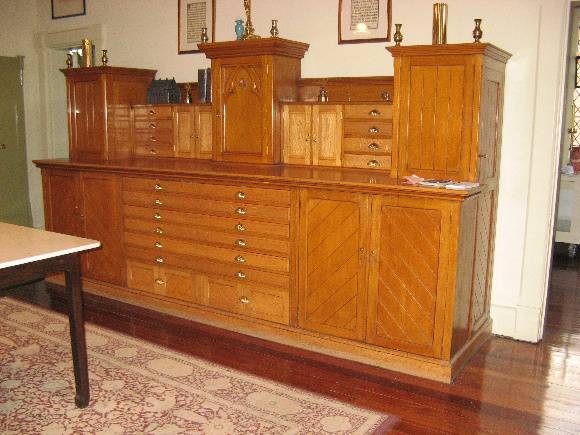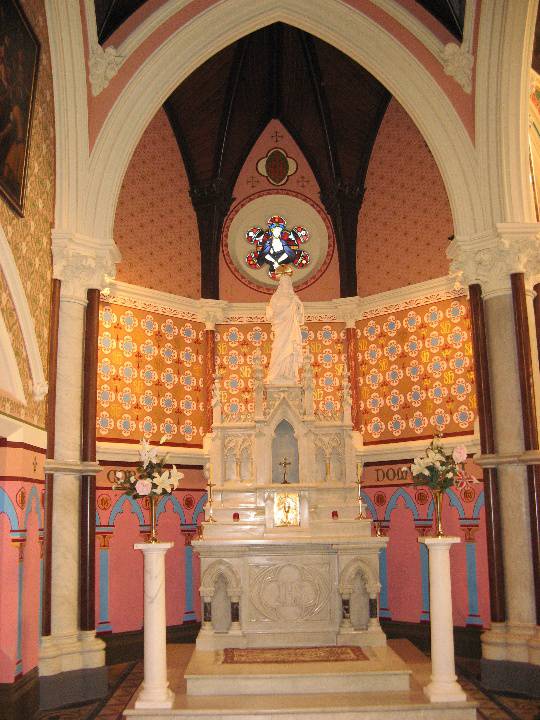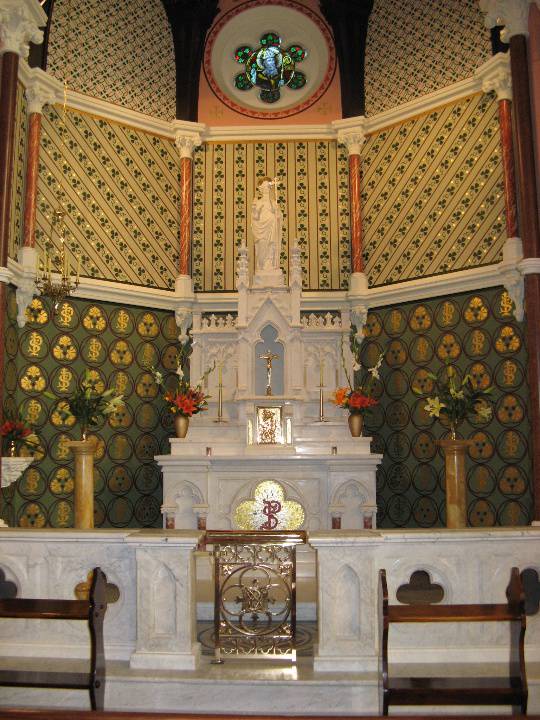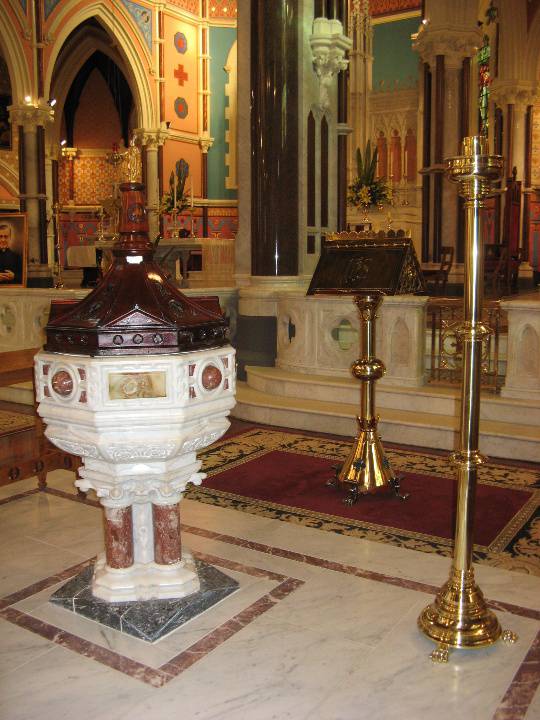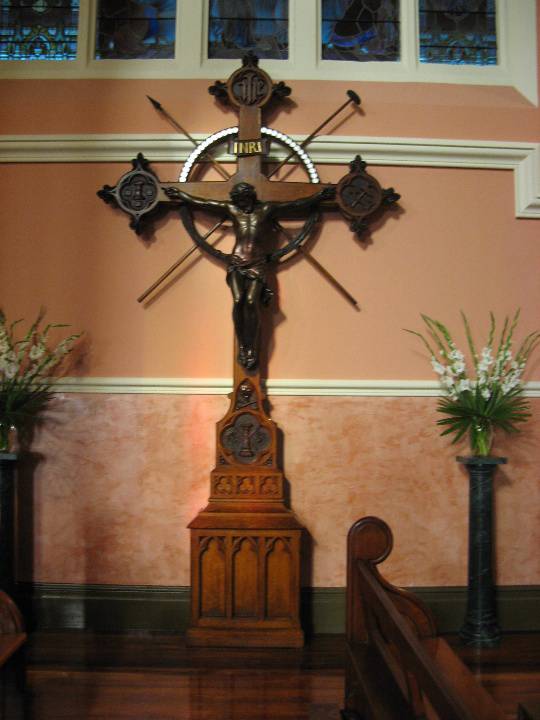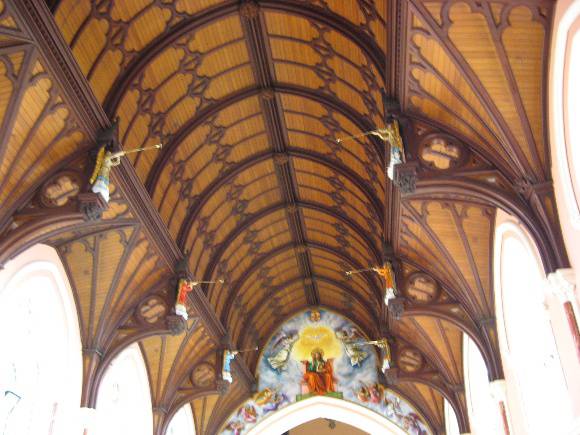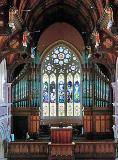| Back to search results » | Back to search page » |
|
ST MARY STAR OF THE SEA CHURCH COMPLEX
Statement of Significance
What is significant?
St Mary Star of the Sea was built in 1891-1900 to replace an earlier
church built in 1854. North and West Melbourne became a parish in 1872
and in 1872-3 a presbytery designed by William Wardell was built for
the first resident priest. In 1881 it was condemned due to faulty
foundations and the architects Reed & Barnes carried out extensive
renovations, with the addition of prominent curved buttresses and a
verandah and balcony. The foundations of a new church were laid in
1883-6, but by 1889 there were concerns that the new church would be
too small and it was resolved to begin again. The new building was
designed by the architect Edgar Henderson and the contract was awarded
in September 1891 to C W Crompton. The 1890s depression and lack of
funds slowed work considerably and in 1896, with the walls still
incomplete, Henderson left Victoria for Western Australia. He was
replaced by the architect Phillip Kennedy who made a number of
alterations to Henderson's design, and is credited with the final
design of the roof and the interior. In 1897 the spire was eliminated
from the design due to financial problems. In 1898 the specifications
were accepted for a new pipe organ, a huge electric-powered three
manual instrument by Fincham & Hobday. Windows were commissioned
from the leading manufacturers in England, Germany and Australia. The
church was officially opened on 18 February 1900 by
Cardinal-Archbishop Moran of Sydney. The fixtures and fittings were
supplied by some of the most highly-regarded artists and furnishers in
Melbourne and beyond. With the completion of the new church the old
one was used as a school. A new boys' school designed by the
architects Kempson & Conolly was built on Howard Street in 1910,
and three years later the old church was demolished and a girls'
school designed by the same architects was completed in 1914 on the
Chetwynd Street corner. The old denominational school south of the old
church was converted into clubrooms (now demolished and replaced by a
new school building). Further decoration of the interior took place in
the inter-war period and in the 1920s the original timber altars were
replaced by altars of Italian marble. The building and interiors
underwent major restoration works in the early twenty-first century. The St Mary Star of the Sea complex includes the church, the
presbytery, and the boys' and girls' schools. The church is a Latin
Cross plan French Gothic style building of brick faced with random
coursed sandstone on a bluestone plinth, with limestone dressings, a
slate roof and an incomplete tower on the north-east corner. The slate
roof is embellished with a series of dormer vents, fabricated from
sheet zinc. At the centre of the roof is a polygonal fleche of pressed
zinc on timber framing, with louvred vents on the sides and surmounted
by a tapering conical spire. The colonnetes flanking the window and
door openings are of polished red Aberdeen granite. The total length
of the building is 175 ft (54 m) and the height of the roof ridge is
75 ft 23m). The interiors are opulently decorated, with a strong
Italian Baroque influence. The nave is painted pink and there is
extensive use of high-quality building stone such as Swedish red
granite in the nave columns, Carrara white marble for the transept
piers and Pyrenean rose marble for the chapel columns. This is further
enhanced by the reflective finishes of the mosaic-tiled sanctuary
floor, the brass altar rails, the scagliola (imitation marble) of the
colonettes and the polished timber, especially in the distinctive
two-toned groined ceiling. The ceiling is lined with timber panelling,
and painted statues of angels blowing trumpets stand on the
hammerbeams. The church retains much original furniture and fittings,
including its pews (1900), elaborate marble altars (1925-7) and font
(1900), a fine set of Stations of the Cross by Peter Hansen (1901), a
Mission Cross by James Curtin (1891), a Bishop's throne made for
Daniel Mannix in 1913, and several notable stained glass windows made
by prominent local and overseas craftsmen. The Fincham organ in the
gallery is a large three manual organ with richly gilded and decorated
pipes arranged on either side of a large stained glass window,
possibly by Brooks Robinson & Co, and with a fine blackwood
console. The presbytery is a symmetrical two storey rendered building
with a slate roof, and a two storey cast iron verandah with unusual
round-arched flying buttresses supporting the walls. The boys' school
is a two storey symmetrical rendered Free Classical style building
with a slate roof and with twin gabled parapets on the front
elevation. The front facade of the girls' school has a very similar
composition, but is of face brick with rendered dressings and has
Gothic arched openings.
How is it significant?
St Mary Star of the Sea is of architectural, historical, aesthetic,
technological and social significance to the state of Victoria.
Why is it significant?
St Mary Star of the Sea is historically significant as Melbourne's
largest parish church and as one of the most costly parish churches
built in Australia, a reflection of the spirit of the substantial
Catholic population, predominantly of Irish extraction, of the area in
the late nineteenth and early twentieth century that helped fund its construction. St Mary Star of the Sea is architecturally significant as unusual
example of a church in the French Gothic style, and as a major example
of the work of the distinguished architects Edgar Henderson, a
Catholic architect who later achieved considerable success and renown
as a designer of Catholic churches, schools and convents in Western
Australia, and Phillip Kennedy. The complex includes an interesting
presbytery designed by William Wardell and altered by Reed &
Barnes and two early twentieth century school buildings by Kempson
& Connolly. St Mary Star of the sea is of aesthetic significance for its opulent
interior, with imposing marble and granite pillars, an unusual timber
ceiling, thought to be unique in Victoria, intricate marble fittings,
especially the marble altars and font, Stations of the Cross by Peter
Hansen and an oak mission cross by James Curtin. The magnificent
stained glass windows are by prominent local and European makers, such
as William Montgomery, Hardman & Company of London and Franz Mayer
& Company of Germany The Fincham pipe organ is historically and technologically
significant as the largest example of nineteenth century indigenous
organbuilding in Australia to remain essentially unaltered. It is the
most intact surviving example of the work of the prominent organ
builder George Fincham and was the last organ completed by Fincham
himself. It is one of a very small number of surviving three-manual
Fincham organs, and is believed to be the second largest organ, after
that in the Sydney Town Hall, to retain a tubular-pneumatic key and
action stop. St Mary Star of the Sea is socially significant for its important
role in the lives of the Roman Catholic community of Melbourne.
Group
Religion
Category
Church


